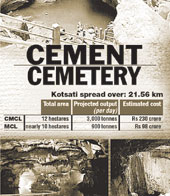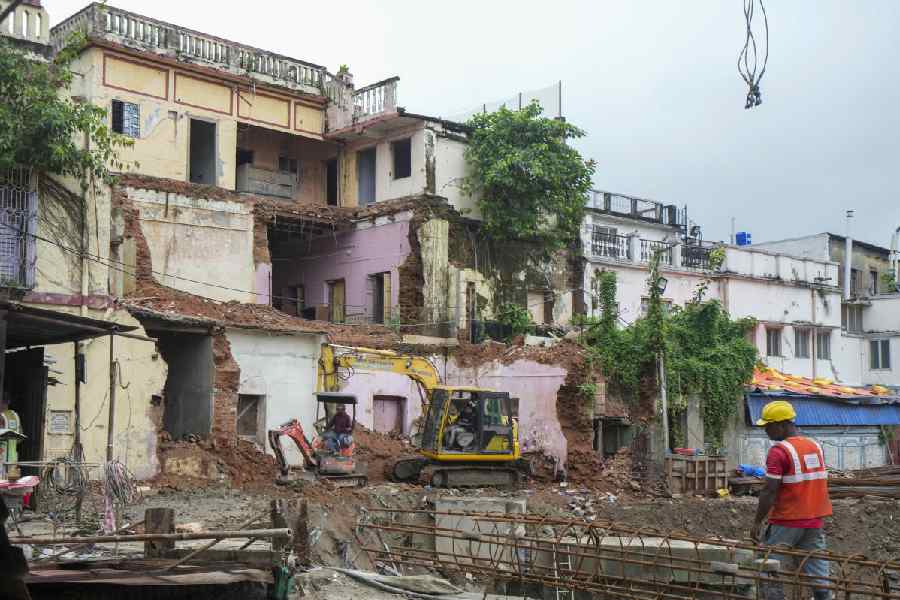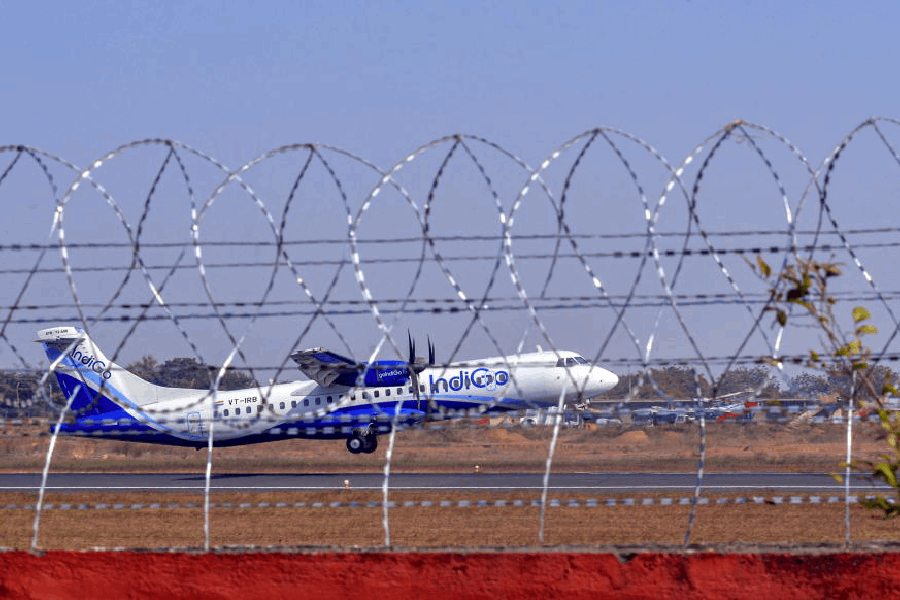 |
If industry makes attempts to wipe out nature, the outcome is anybody?s guess. And this is precisely what two companies are attempting to do in Meghalaya. The Kotsati at Lumshnong and other magnificent caves in the Jaintia Hills district of Meghalaya are facing a serious threat from two cement plants.
The entrances of nearly 24 caves of the Kotsati-Umlawan have been blocked with deposits from limestone quarrying. Also coming up are two cement plants ? the Meghalaya Cements Limited (MCL) in Lumshnong and Cements Manufacturing Company Limited ? which will soon block the caves forever.
The projects have been cleared through the ?single window? system. The firms also enjoy subsidies under the Northeast industrial policy and other incentives that are given to industrial units in the Export Promotion Industrial Park (EPIP) at Byrnihat along the Guwahati-Shillong national highway and also at the Umiam industrial estate.
The CMCL, which will be set up on an area of over 12 hectares, has a projected output of 3,000 tonnes of cement per day at an estimated cost of Rs 230 crore. The MCL, covering nearly 10 hectares, has a projected output of 900 tonnes per day at an estimated cost of Rs 98 crore.
Though cement production has not taken off and pollution levels are yet to be measured, environmentalists and speleologists (cave explorers) have begun pointing accusing fingers at the state government for allowing these units to come up in areas where not just caves, but some very historical and important bio-diversity spots like the Narpuh forest reserve, are located.
Renowned cave specialist and Tenzing Norgay National Adventure award winner, Brian Dremot Kharpran Daly, warns of a catastrophe once the cement factories start optimum production.
?Everything will go, the history, the distinctive cave life, the beautiful stalagmites which can tell you the history of the past climate dating back to over 100 years,? says Daly. Daly has been instrumental in leading a massive campaign against the setting up of a cement plant near the spectacular Siju caves in Garo hills.
The proposal of the cement plant, which was to be set by the Associated Cement Company Limited in collaboration with the Meghalaya Industrial Development Corporation, was turned down by the state and the Union government on the grounds that it might have adverse impact on the Siju caves (known for their hordes of bats).
Daly pointed at some rare characteristics inside the cave, such as: virgin river passages and swimming chambers; breathtaking coral and stalagmites; an obelisk chamber; lakes and water bodies with rare and endangered fishes, crayfish and crabs; fossil galleries; sand beaches; streamways and waterfalls, which make up a rare exhibition of natural wealth.
?I am not against development plans but then there should be some checks and balances. Do we have the right to destroy India?s longest caves, which have taken thousands of years to form?? asks Daly.
Daly expresses serious doubts about the setting up of the plants ?so close? to human habitation, near some ?age-old forests? and more intriguingly on top of the longest cave system (the total area of over 35 km) in the country. He is not sure if the cement plants have come up after procuring the requisite environmental clearance and ?Environment Impact Assessment (EIA)? certificates from the Union ministry of environment and forest and other agencies.
The cave expert is also critical of ?manipulative tactics? that such companies often indulge in to get their business going at the cost of environment. Quoting the EIA notification of 1994, Daly argues that cement plants fall under the ?Red category? of polluting industries.
Those, with above Rs 100 crore investment, ?should not be set up? at a place which is less than 5 km (aerial) distance from reserved forests or wildlife sanctuaries, tourist or cultural or historically importance sites.
Daly has also written to the Union ministry of environment and forest citing reasons what he calls ?uncomplimentary development?.
In his two-page argument, Daly has listed a number of points, like site clearance, forest clearance, environment impact assessment, objections and views from the public, environmental public hearings before setting up cement plants, conditional clearance or consent by the State Pollution Control Board and limestone mining lease, as ?prerequisites? for setting up a cement plant with investment above Rs 100 crore.
In fact, in order to escape the slew of clearances required if the industry to be set up entails investment above Rs 100 crore, many of those setting up shop are alleged to have shown the project cost ? which actually may have run into several hundred crores ? in their books as less than Rs 100 crore.
The state government and the project managers of the two cement plants have, however, defended themselves and paint a very rosy picture. Notwithstanding the complaints from environmentalists, director of industries S.B. Gurung feels there is nothing wrong with the two cement plants, for all the clearances have been obtained and safety measures have been adopted to prevent environment pollution.
CMCL project co-ordinator Devendra Bansal said, ?special pollution checking devices? have been installed and the company has obtained the EIA.
Bansal and the deputy general manager (human resources) Supriyo Roy were more interested in counting the gains from the plant and did not have much thought to spare on preservation of caves and pristine forests.
Instead, both Bansal and Roy spoke of ?the employment? that would be generated, conveniently ignoring the present situation where most of the employees have been brought from outside on the pretext that ?there is dearth of skilled labour? in the state.
The case appears to be not too different with the MCL. Project director Ramudhar Agarwal scoffed at allegations concerning pollution and destruction of caves and claimed that those (environmentalists and others) do not have ?even basic idea? of the place.
?Do they mean that we must not set up development projects?? he asked. He claimed to have installed ?pollution control equipment?.
?We need not worry about pollution these days as there are devices to protect the environment. Moreover, our investment is less than Rs 100 crore. Therefore, we need not worry about the EIA,? he said.











